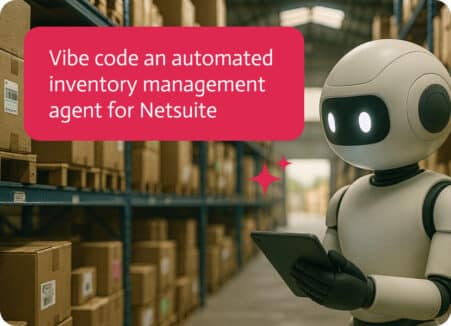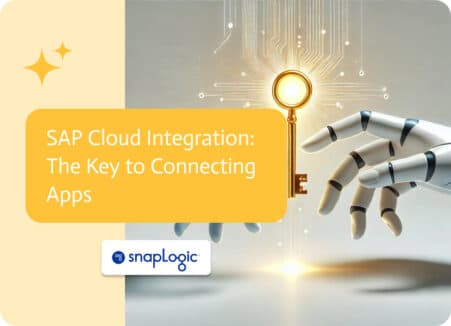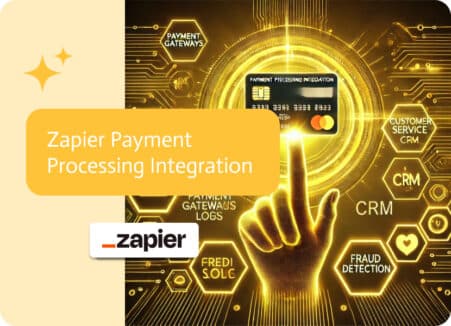

Lovable vs. Windsurf: No-Code vs. AI-First Development
Should you build apps by writing them out in plain English, or should you code them with an AI watching your back the whole time? This is a question that seems simple enough but really isn’t. The Lovable vs. Windsurf debate is a perfect representation of this division because the two platforms have very different ideas about what coding should feel like.
Lovable is on a high in terms of growth thanks to its promise that anyone can make functioning apps without having to write programming languages. Windsurf (formerly Codeium) was just named a Leader in the 2025 Gartner Magic Quadrant for AI Code Assistants. OpenAI bought the company in the beginning of 2025, which confirmed its vision of AI-native development for people who enjoy coding.
The comparison between Lovable and Windsurf isn’t about which is better for vibe coding; it’s more about whether you want to avoid code altogether or write better code faster with AI being your programming partner.
Lovable: The Rebel Without A Code
The whole point of Lovable is to show that you don’t need to know React, databases, or sending out processes to make software. The platform made $17 million in annual revenue with 30,000 paying customers courtesy of a very simple idea: most people who have app ideas don’t want to become developers; they just want software that works.
The pitch is refreshingly direct: describe your app, see it come to life, and then use it. Lovable lets anyone make production-ready software without knowing how to code. It turns conversational prompts into full web apps with both front-end and back-end functionality. You type “Make a project managing app complete with organizational boards and deadline reminders,” and Lovable makes it all happen.
What Makes Lovable Unique Right Now
Lovable Cloud and Lovable AI, both powered by Google’s Gemini, have just been released. These new products change what “no-code” really means. Users can add features to their apps with Lovable AI without having to set anything up, get APIs, or pay for them separately. Do you want to know how people feel about user reviews? Say it. The AI works without any technical setup needed.
You’re not stuck with demos, you’re building real apps because the system works with Supabase for records and GitHub for versioning. Users still own the code that is created, which gives them control to make unlimited changes and then deploy. You can export it to GitHub, give it to developers, and keep working on it. It’s up to you.
This method has led to real business results, like when Sabrine made a women’s safety app on Lovable that made $456,000 in three months. In seven months, Lumoo made €700,000 a year. These people didn’t know how to code when they started, but they built real businesses that make money, not just projects for fun.
Where Lovable’s No-Code Vision Gets a Little Harder
The platform knows that intricate, commercial apps are likely to require a developer’s help to make them better. Making complex apps is one thing; making them work better for scale, security, and in overall performance will definitely still need a dev on hand.
There is also the learning curve, yes, the ironic barrier. To get the best results, you need to learn how to describe what you want, which is like learning to talk to software. This goes against the promise that you don’t need any technical skills.
Windsurf: The Developer’s AI Copilot on Steroids
Windsurf takes a different approach to vibe coding. It assumes you know how to code and want to do it faster, smarter, and with artificial intelligence that really gets your whole project. Windsurf is an AI-native embedded development system looking to replace the old ways of coding, like Visual Studio, with clever, collaborative coding done by ML.
Windsurf is built on top of VS, so developers will find it easy to use right away. The magic is in Cascade, the AI that doesn’t just fill in the blanks; it understands how the base is set up, learns your patterns, and can work on even the most intricate jobs by itself for up to 12 hours.
What Makes Windsurf Interesting
The Cascade AI agent shows a different way of thinking about vibe coding. You can upload pictures, like screenshots of your website, right into Cascade. Windsurf then makes code to copy the design or add similar features. It’s a strong way to turn visual ideas into actual computation that works.
Cascade understands and reads web pages in real time, giving the code useful, actionable context. The indexing engine gets context from the entire framework, not just files that have been changed recently. This makes predictive recommendations and chat responses much more effective for big projects.
The “Problems” tab automatically shows you all the problems by running pytest, pylint, and radon at the same time to find problems right away. With vibe coding, you tell Windsurf what you want, and it takes care of the details. You can see and control every decision.
Windsurf Wave 8 added the ability to summarize pull requests automatically with the /windsurf command and do inline reviews where AI finds problems and leaves comments that make sense. It also added integration with Google Docs for centralized knowledge management. These aren’t just fun features; they’re functions businesses use to work together.
Real developers say that using Windsurf has changed their lives: “I’ve been building a new thing with Windsurf, and I’ve been laughing so hard that I almost cried for the last hour.” Another person said, “The UI is much easier to use than Cursor.”
Where Windsurf Gets Messy
The platform assumes you know the basics of coding. If you know what it’s doing, like file inspection, Git diffs, GitHub pushes, and VS compatibility, watching Cascade work is very interesting. You’re lost if you don’t know how those workflows work.
Some users say that bugs happen from time to time because the platform is new and the AI-generated code “hallucinations” need developer supervision. The credit-based pricing model makes people worried that costs will go up when having to do long debugging sessions. One unhappy user said, “My experience has gone downhill since OpenAI bought it for $3 billion in May 2025,” pointing to problems that haven’t been fixed.
The tool works at “person speed, not instantaneous computer speed,” which feels a little slow when you watch an agent write code for long periods at a time.
The Lovable vs. Windsurf Decision Principles
Pick Lovable when:
- You don’t want to learn how to code
- Business problems need software solutions, not dev training.
- Your apps are simple, like overviews, templates, and CRUD apps.
- “Vibe coding” means “make this for me from start to finish.”
- The most important thing is how quickly you can go from idea to deployed app.
- Budget limits make it impossible to hire developers.
Choose Windsurf when:
- You already know how to code and want AI to help you get more done.
- You need to be able to control how things are built.
- Your vibe coding workflow should help you learn more, not replace what you already know.
- You’re making complicated apps that need smart logic
- You care about knowing how code works.
- You want a place that gets more technically advanced over time.
Lovable vs. Windsurf: What No One Talks About
The interesting thing about the Lovable vs. Windsurf comparison is that both sides are right about vibe coding, but for very different groups of people.
Lovable is right that most business apps don’t need someone to be a developer. A product manager who needs a dashboard to keep track of KPIs doesn’t need to learn React; they just need a dashboard that works. Lovable does this.
Windsurf is right that professional developers want AI to help them, not take its place. Engineers with a lot of experience don’t want tools that hide how things work; they want tools that help them work faster while still letting them see and control everything. Windsurf does this.
The platforms aren’t actually in competition, because they have very different ideas about how software should be built.
Noca’s Place in The Vibe Coding Picture
Lovable is for people who don’t code, Windsurf is for developers, and Noca takes a different approach to vibe coding by focusing on enterprise orchestration.
Noca is great when applications need to connect to existing business systems and legacy databases in complex ways that other platforms usually have trouble with. Lovable makes apps that can run on their own, and Windsurf helps developers make anything. Noca, on the other hand, makes apps that work on their own and with your existing infrastructure and manage workflows across multiple systems.
The Bottom Line on Lovable vs. Windsurf
The comparison of Lovable vs. Windsurf shows that both are great platforms that solve very different problems in the vibe coding revolution.
Lovable makes it possible for anyone who doesn’t code and won’t start to make software. More than half of the Fortune 500 companies that use Lovable to “supercharge creativity” show that the platform is more than just a marketing gimmick. It reached $17 million in annual recurring revenue by going after people who need software that works but don’t want to be developers.
Windsurf reimagines the development environment as AI-native, collaborative coding. Windsurf was named a Leader in the 2025 Gartner® Magic QuadrantTM for AI Code Assistants and was bought by OpenAI. It shows what the future of professional development will look like, where AI enhances human knowledge instead of replacing it.
There is no one platform that is better than the other. They are made to work best for different types of users, use cases, and relationships with code. Your choice between Lovable and Windsurf depends less on the features and more on how you answer this question: Do you want to build without coding, or do you want to code better with AI?
Want to make apps without knowing how to code? Adorable. Want to code faster with AI as your partner? Windsurf.
Need prototypes that stakeholders can use right away? Adorable. Want to be in charge of all architectural decisions? Windsurf.
Making simple business apps? You can choose either one based on your coding style. Making complicated, high-tech apps? You can choose windsurfing.
The vibe coding revolution doesn’t mean that one way of thinking wins. It’s about giving everyone the right tool for their skill level and relationship with code. Both Lovable and Windsurf are moving that revolution forward, but in opposite directions toward different places that are all valid, valuable, and necessary.
Lovable vs. Windsurf FAQs
Can people who have never used either platform before use them well?
Noca: Yes, you can go from a simple sentence to an app that can be used right away in just a few minutes, and it works with all of your current systems.
Lovable: Yes, it was made for people who don’t know how to code.
Windsurf: No, it assumes you know the basics of coding. The platform helps developers get more done, but it doesn’t teach you how to code from scratch.
Which one gets me to a working app faster?
Noca! But for the sake of this comparison article, Lovable for quick results: just describe your idea and get an app up and running in minutes. If you already know how to code, windsurf for speed. Cascade can work on its own for hours, but you need to help it make architectural decisions along the way.
Is it possible to export code and leave either platform?
Yes. Lovable works with GitHub, making it easy to export and keep working on projects in other places. You can download Windsurf projects, push them to GitHub, and use them with other tools. Neither platform keeps you locked in forever.
Which platform is better for studying?
Windsurf is a great way to learn coding because it shows you real code, patterns, and choices. Lovable is great if you want to learn how to build products without having to code. It completely abstracts away the technical side of things. Different tools are needed for different learning goals.
Will these platforms take the place of professional developers?
No. Lovable makes new builders who don’t know how to code, which grows the market instead of replacing developers. Windsurf makes it much easier for professional developers to get a lot done on hard tasks. Neither of these things gets rid of the need for engineering knowledge on complex applications.


